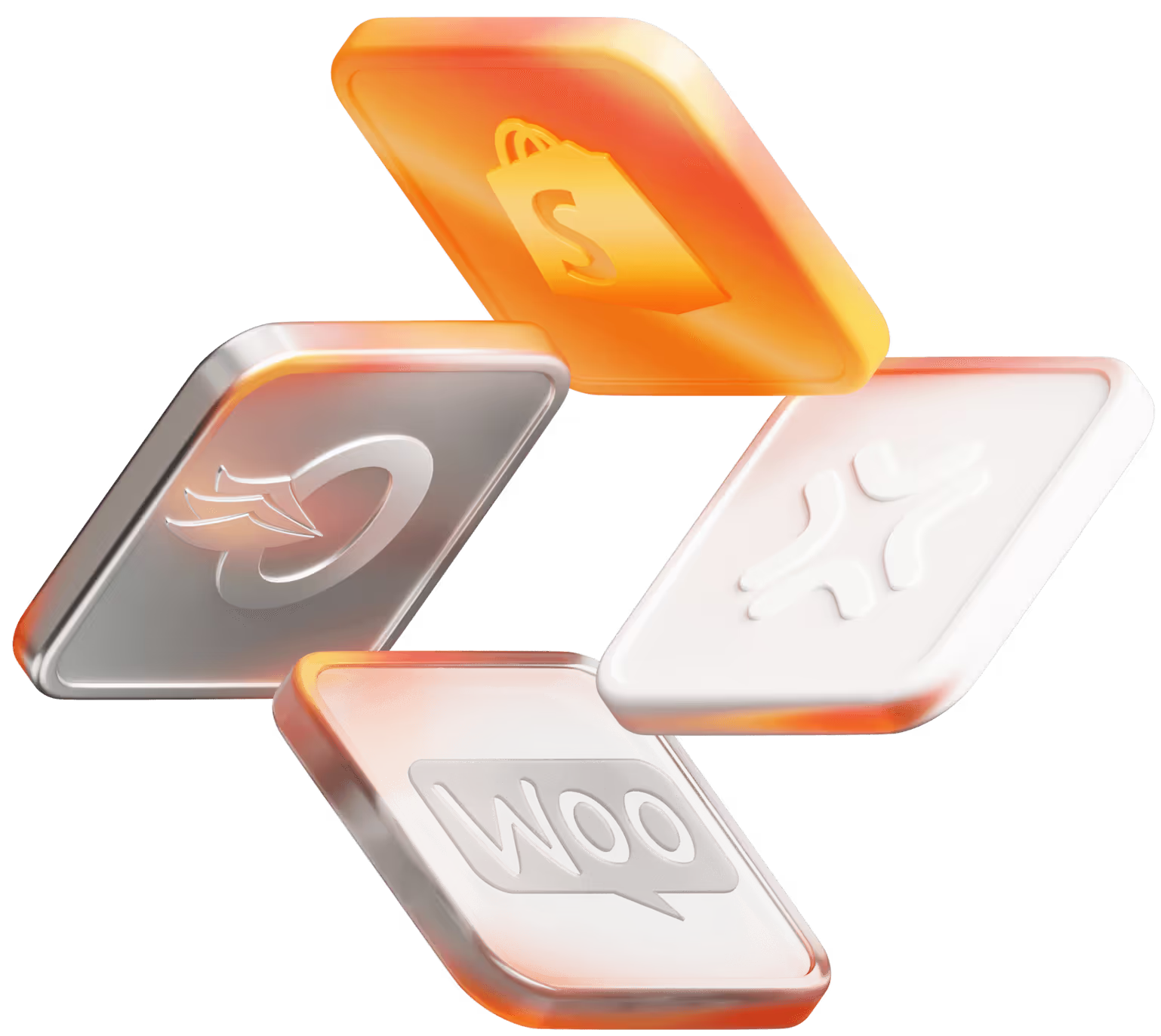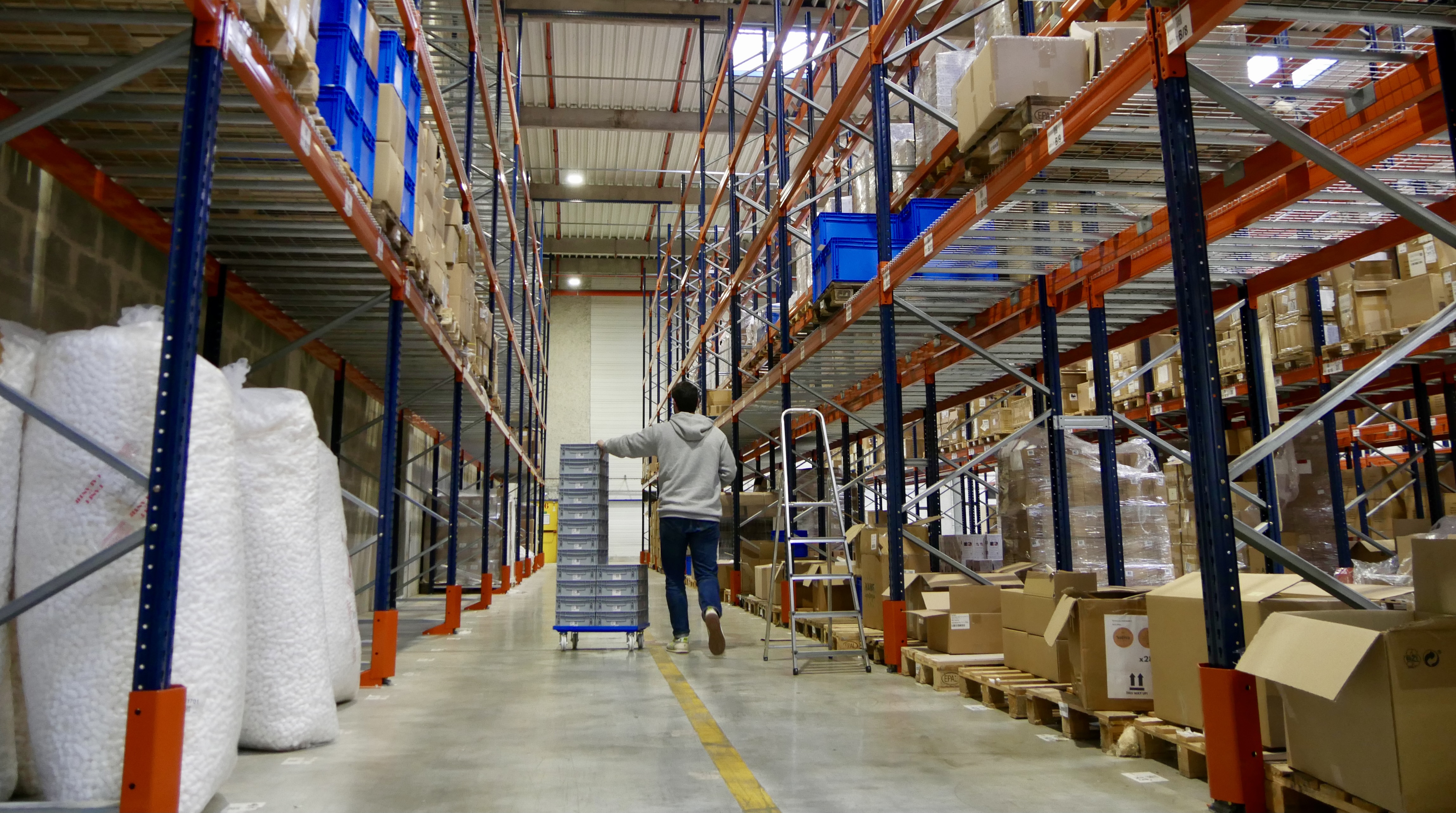Cómo Hive desarrolla la mejor tecnología para procesos físicos: una entrevista con el Product Manager Friedrich
Conoce a Friedrich, un jefe de producto de Hive que trabaja en nuestro Sistema de gestión de almacenes (WMS)
.jpeg)
Desarrollar tecnología para utilizarla en los procesos físicos de un cumplimiento no es tarea fácil. Hay que tener en cuenta muchas variables y se requiere un enfoque práctico para probar y optimizar los procesos.
En Hive, hemos desarrollado nuestro propio Sistema de gestión de almacenes (WMS) desde cero para asegurarnos de que se diferenciaba de los demás y era flexible para adaptarse a todas las necesidades de nuestros comerciantes.
Friedrich, Jefe de Producto, se ha ocupado del SGA de Hive y de la aplicación Centro de cumplimiento desde el primer día. Hablamos con él sobre su experiencia gestionando y desarrollando esta tecnología, esta cubierta:
- Sus aspectos más destacados y los retos del desarrollo del SGA de Hive
- Cómo llegó a la gestión de productos logísticos
- Cómo prueba los procesos en los centros de cumplimiento de Hive
¿Cómo es ser jefe de producto en Hive?
Diría que ser jefe de producto es bastante práctico en comparación con otras empresas tecnológicas. Creamos nuestra aplicaciónCliente y, además, asumimos el reto de crear nuestro propio Sistema de gestión de almacenes (WMS) . Pero además de ser una empresa tecnológica, gestionamos nuestros propios centros de cumplimiento, lo que significa que creamos productos para procesos empresariales y operativos que son de nuestra propiedad. En consecuencia, lo que resulta bastante singular en Hive es que tenemos usuarios externos, nuestros clientes, así como usuarios internos que trabajan con nuestro SGA. Esto añade una capa de complejidad en lo que respecta a la gestión de las partes interesadas.
¿Qué es lo que más te gusta de trabajar en Hive?
El carnet de carretilla :')
¿Cuál ha sido el mayor reto?
El mayor reto ha sido construir el Sistema de gestión de almacenes (WMS) desde cero y, al mismo tiempo, ampliar las operaciones. Queríamos un Sistema de Gestión de Almacenes completo que ofreciera todas las herramientas para dirigir las operaciones de cumplimiento en Hive. Un SGA centrado en las necesidades específicas de las marcas de comercio electrónico D2C y de nuestros asociados de fulfillment.
La mayoría de los SGA que hay actualmente en el mercado llevan ahí una década o así. Cubren todos los procesos, mientras que cuando empezamos a construir el nuestro desde cero sólo podíamos añadir un proceso cada vez.
Pero esto tenía muchas ventajas: podíamos centrarnos en aquello en lo que nos diferenciábamos. Ninguno de los otros SGA del mercado está diseñado específicamente para el comercio electrónico como el de Hive, centrado en la distribución D2C. Nos enorgullece crear procesos centrados en el comerciante y el Cliente final.
También somos muy flexibles a la hora de desarrollar nuestro producto y garantizar que satisfacemos las necesidades del mercado. Por ejemplo, admitimos productos con y sin código de barras, asumimos requisitos de picking y envasado muy personalizados, y admitimos Seguimiento de lotes para productos con fecha de caducidad.
¿Cómo acabaste trabajando en logística?
Estudié Ingeniería y Empresariales. Después, me dediqué a la logística de producción, centrándome principalmente en la producción.
Trabajando en la industria del automóvil aprendí mucho sobre la estandarización de procesos: piensa en las cadenas de montaje altamente automatizadas, por ejemplo. Lo que me pareció interesante en logística es que no se puede estandarizar todo porque en algún momento se sacrifica la flexibilidad.
Tras algún tiempo trabajando para grandes empresas y en consultoría, tuve la oportunidad de empezar a trabajar en Hive.
La oportunidad de construir y dar forma a algo desde cero no habría sido posible en una empresa más grande o en consultoría, y me dio la motivación intrínseca para formar parte de la reinvención de las operaciones de comercio electrónico.
¿Cómo acabaste siendo jefe de producto?
El primer día nos reunimos y tuvimos una gran tormenta de ideas sobre qué procesos tendríamos que cubrir y cómo. Escribí "depender del SGA" en muchos post-its hasta que me di cuenta de que no queríamos depender de la tecnología existente, sino aprovechar la oportunidad para construir la nuestra propia.
Como Hive era tan joven cuando empecé, trabajé como generalista en una variedad de flujos de trabajo como Crecimiento, Operaciones y Experiencia Cliente . Con todos los conocimientos que tenía de la planta, tras lanzar nuestra segunda FC me convertí en la responsable de producto de nuestro SGA.
¿Cómo te aseguras de que participan todas las partes interesadas?
Esto puede resultar bastante difícil. Toda la empresa es parte interesada porque el sistema afecta a todos. Como ya he dicho, incorporarme pronto a Hive me dio la oportunidad de apoyar a distintas áreas, lo que significa que tenía una buena idea de cómo utilizan el SGA los distintos equipos y qué pueden necesitar de él.
Para los lanzamientos de mayor envergadura, creo un equipo interfuncional para garantizar la alineación en toda la empresa. Hacemos una puesta en marcha, revisiones y una retro, y mantenemos la comunicación a un nivel granular en canales Slack dedicados. Los principales interesados son responsables de mantener al día a sus compañeros de equipo o de implicar a las personas adecuadas cuando proceda.
Como ya he mencionado, tenemos nuestros canales Slack dedicados y la mayoría de nuestras reuniones son virtuales. Pero hay semanas en las que estoy en nuestro Centro de cumplimiento más de dos días a la semana para probar nuevas funciones, control de calidad, gestión de procesos y gestión de cambios. Por supuesto, todo ello en colaboración con nuestros ingenieros que construyeron el software, el equipo central de cumplimiento, los jefes de centro y otras personas increíbles que tenemos en la planta.
Nuestros clientes también son una parte interesada importante. Hablamos mucho con ellos para entender sus procesos, sus puntos débiles o para que nos den su opinión sobre lo que construimos. Incluso de vez en cuando visitan nuestro Centro de cumplimiento para ver sus productos, lo que me encanta. También enviamos un boletín mensual de productos para mantenerles al día de lo que hemos enviado.
¿Cómo te aseguras de que los procesos que funcionan desde el punto de vista técnico funcionan para los procesos físicos de la FC?
Ves y aprendes que con cada cambio de producto también cambian los procesos en la FC. Es muy importante estar bien alineado con los procesos de cumplimiento. Podríamos crear una función impresionantemente compleja desde el punto de vista técnico, pero sería imposible gestionarla en la planta y mantener contentos a nuestros asociados de cumplimiento.
Como pasamos tanto tiempo en la planta hablando con los asociados, los jefes de obra y los ingenieros de procesos, con el tiempo aprendes lo que es posible y lo que no. Evidentemente, a veces es posible, pero no es fácil ponerlo en práctica. Por eso me centro en la orientación y en proporcionar suficiente información directamente del producto.
Cuando desplegamos una función en nuestro Centro de cumplimiento , lo hacemos juntos en la planta y comprobamos si los flujos son intuitivos y si hay suficiente información disponible en caso de que no lo sea. A veces esto puede ser todo un reto, pero ver el impacto directo de lo que envías es también lo que lo hace divertido.
¿Cuál es la importancia de estar en la CF?
Construir procesos y construir el producto se hace mano a mano. No es que construyamos software y se lo entreguemos a otra persona, sino que somos dueños de los procesos en la FC.
Esto significa que el producto está adaptado de forma única a nuestras operaciones, porque gestionamos ambas. Para hacerlo correctamente, pasamos tiempo en la FC para mantener un alto grado de centralización en el usuario y poder iterar con rapidez. Naturalmente, con el tiempo, la velocidad de iteración en la FC puede disminuir a medida que aumenta la escala y la gestión del cambio se convierte en un tema más amplio.
Por eso, por ejemplo, dedicamos tiempo a la gamificación. No se trata sólo de integrar los procesos más eficientes, también nos centramos mucho en hacer felices a nuestros usuarios. Piensa en factores de recompensa, sonidos e incluso lluvias de confeti. Queremos que utilizar nuestro software sea una experiencia fluida, eficaz y divertida.
¿Cómo te aseguras de que los procesos se adoptan en la FC tras la implantación?
Estamos cerca de la FC de muchas maneras. No sólo físicamente (en Berlín), sino también en cuanto a la relación entre los empleados de nuestra sede central y los colegas de la FC. Además, los datos que recopilamos nos permiten vigilar de cerca cómo funcionan conjuntamente nuestro software y nuestros procesos operativos y medir el impacto.
En última instancia, lleva mucho tiempo estar activo en la planta, pero es crucial estar ahí para garantizar procesos de alta calidad.
¿Te interesa saber cómo funciona el proceso de cumplimiento de Hive? Descubre más en nuestra página de cumplimiento aquío solicita un presupuesto para ver cómo Hive puede beneficiar a tu empresa hoy mismo.











.png)


.png)


.png)
